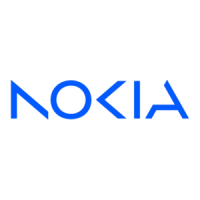7368 ISAM ONT G-240W-J Product Guide ETSI environmental and CRoHS guidelines
Issue: 01 3FE-48009-AAAA-TCZZA 35
4.3.6 Material content compliance
European Union (EU) Directive 2002/95/EC, “Restriction of the use of certain
Hazardous Substances” (RoHS), restricts the use of lead, mercury, cadmium,
hexavalent chromium, and certain flame retardants in electrical and electronic
equipment. This Directive applies to electrical and electronic products placed on
the EU market after 1 July 2006, with various exemptions, including an exemption
for lead solder in network infrastructure equipment. Nokia products shipped to the
EU after 1 July 2006 comply with the EU RoHS Directive.
Nokia has implemented a material/substance content management process. The
process is described in: Nokia process for ensuring RoHS Compliance
(1AA002660031ASZZA). This ensures compliance with the European Union
Directive 2011/65/EU on the Restriction of the Use of Certain Hazardous
Substances in Electrical and Electronic Equipment (RoHS2). With the process
equipment is assessed in accordance with the Harmonised Standard
EN50581:2012 (CENELEC) on Technical documentation for the assessment of
electrical and electronic products with respect to the restriction of hazardous
substances.
4.3.7 End-of-life collection and treatment
Electronic products bearing or referencing the symbol shown in Figure 9, when put
on the market within the European Union (EU), shall be collected and treated at the
end of their useful life, in compliance with applicable EU and local legislation. They
shall not be disposed of as part of unsorted municipal waste. Due to materials that
may be contained in the product, such as heavy metals or batteries, the environment
and human health may be negatively impacted as a result of inappropriate disposal.
Note — In the European Union, a solid bar under the symbol for
a crossed-out wheeled bin indicates that the product was put on
the market after 13 August 2005.
Figure 9 Recycling/take back/disposal of product symbol

